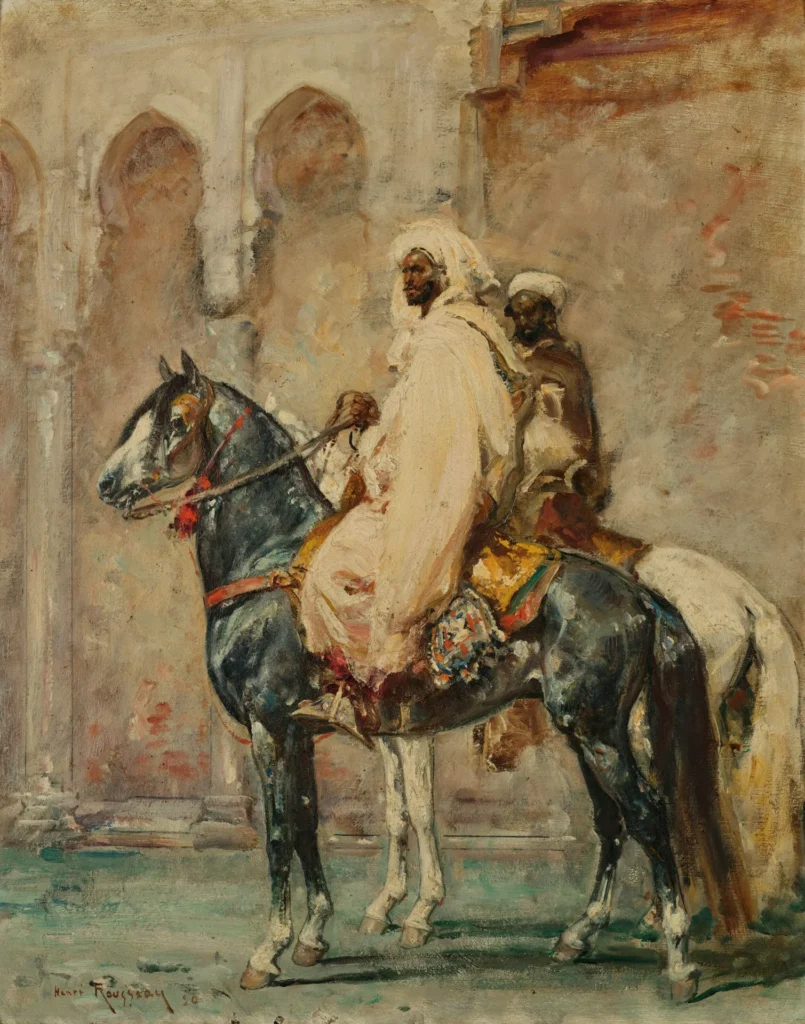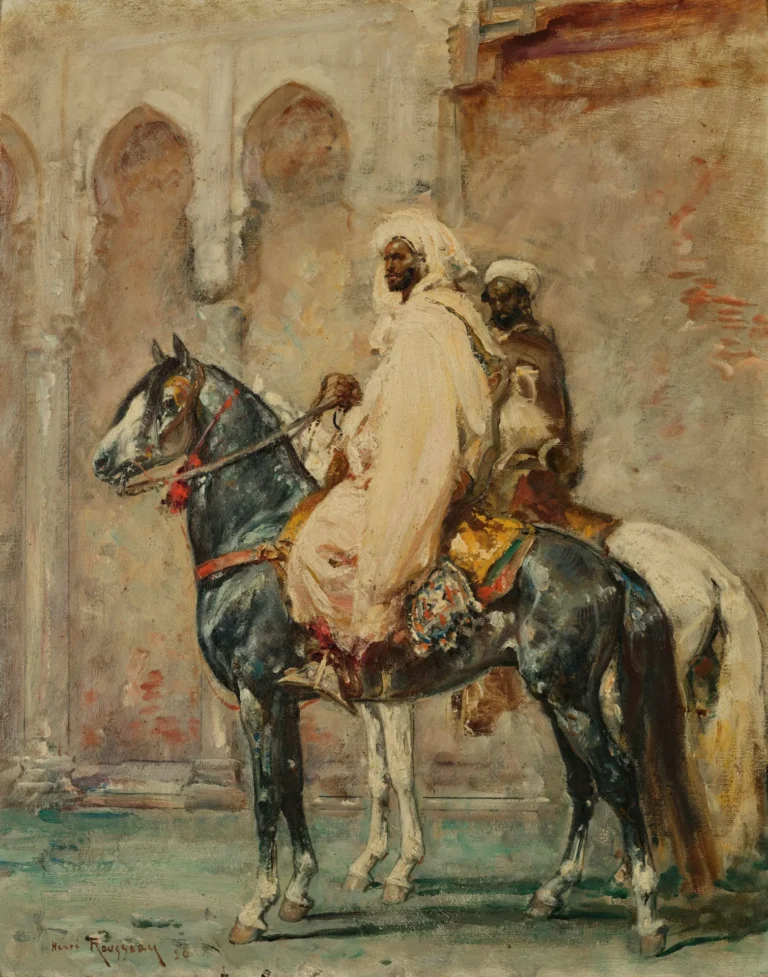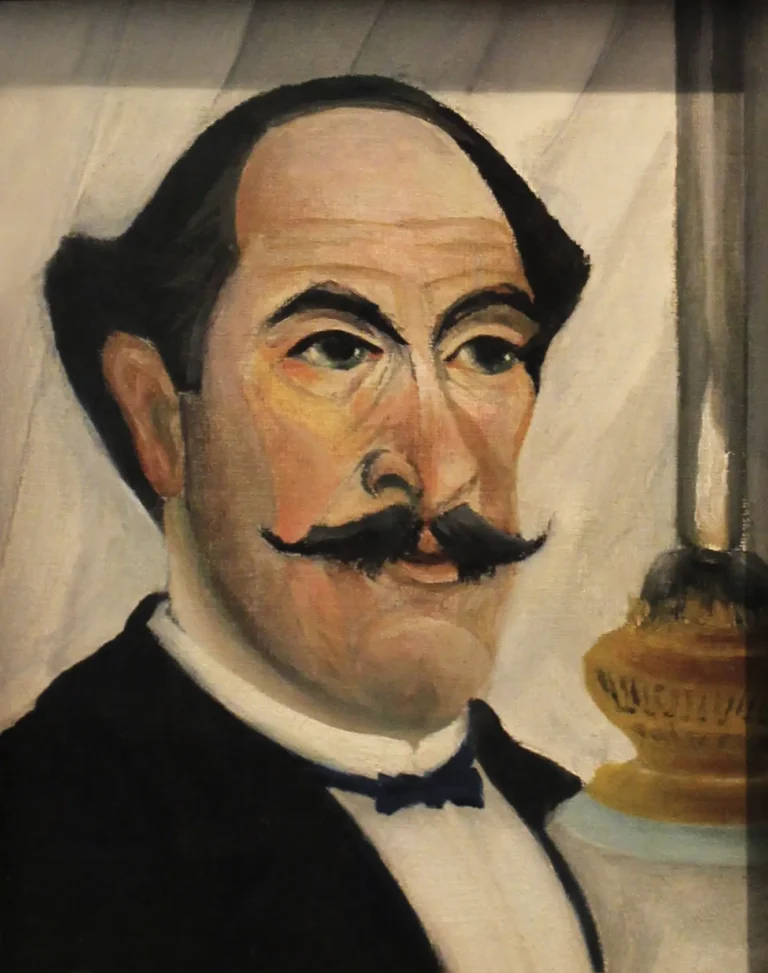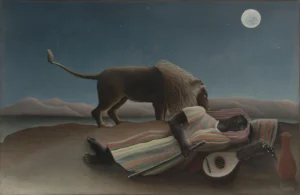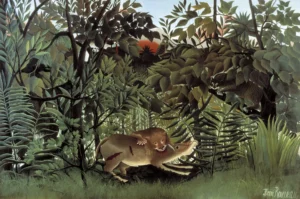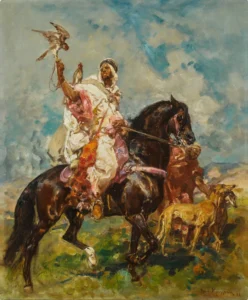Cavaliers arabes (1920)
Henri Émilien Rousseau's Cavaliers arabes is a stunning representation of his 1920 Orientalist phase, showcasing horses and riders against a rich backdrop. With its dimensions measuring 40.6 x 33 cm, this oil on board piece immerses viewers in a world where dynamic movement and vibrant colors harmonize. The painting reflects Rousseau's fascination with North African and Middle Eastern culture, capturing the essence of its equestrian traditions and alluring landscapes, which have made it a sought-after work within the art market.
Year 1920
About the Artwork
Cavaliers arabes encapsulates the visual narrative of an era in which artists like Rousseau were enamored with the exotic allure of the East. Painted in 1920, Rousseau infused his artwork with a sense of dynamism and romance that spoke to audiences of his time and continues to resonate today. This particular piece showcases the harmony between the horse and rider, an ode to strength, elegance, and the rich traditions surrounding equestrian life in Middle Eastern cultures. Rousseau's keen eye for detail and mastery of oil paint render a vivid tableau that enchants art lovers and collectors alike. As he explored varied themes throughout his career, works like Cavaliers arabes helped solidify Rousseau’s place in the pantheon of Orientalist art, with the painting frequently appearing in exhibitions and auctions that underscore its lasting significance.
Did You Know
Rousseau was significantly influenced by the Orientalist movement, which romanticized Eastern cultures in the 19th and early 20th centuries, capturing the imaginations of European audiences. His works often illustrate the exoticism and diversity of Middle Eastern life, evident in Cavaliers arabes.
Over the years, Cavaliers arabes has appeared in various prestigious art auctions, attracting collectors interested in Orientalist themes. Its auction history reflects the growing value as appreciation for Rousseau’s works increases, reinforcing its esteemed status in the art community.
Cavaliers arabes serves not just as a visual feast but also as a cultural representation, showcasing the importance of horses within Middle Eastern societies. This artwork highlights the deep connection between people and their environment, revealing the traditions and symbolism associated with equestrian life.




